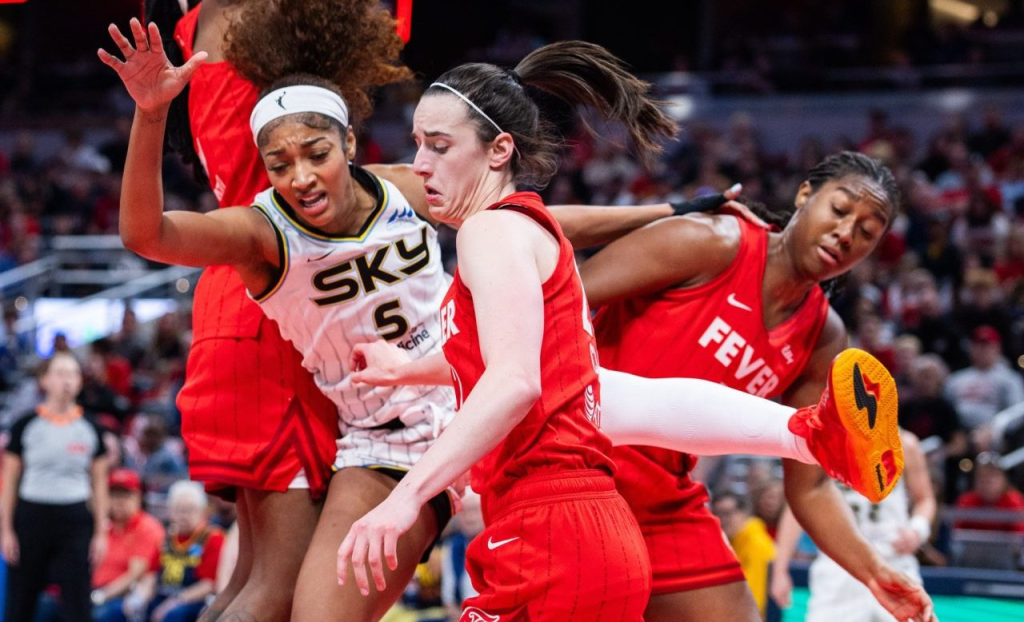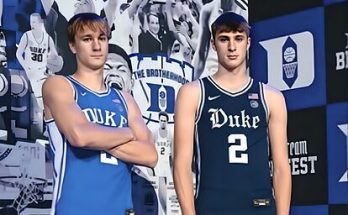In the increasingly competitive world of college football broadcasting, few matchups generate as much anticipation as the September 2025 showdown between the Ohio State Buckeyes and the Texas Longhorns. With both teams projected to be in the College Football Playoff mix and stacked with NFL-caliber talent, the game promises to be one of the defining moments of the early season. But behind the scenes, there was a high-stakes tug-of-war between broadcast giants, program traditions, and athletic department priorities.
According to multiple industry sources, Fox Sports was willing to move the marquee matchup from its traditional noon Eastern “Big Noon Saturday” slot to primetime in order to draw maximum national attention and ratings. The idea was simple: shift what may be the biggest regular-season game of the year into the spotlight of a Saturday night, when the largest possible television audience would be available.
But Texas said no.
That decision stunned many in college football circles. Primetime matchups on national television are often seen as golden tickets for exposure, recruiting, and revenue. So why would Texas turn down the offer? The answer, it turns out, is a complex mix of strategy, tradition, and competitive control.
Sources familiar with the discussions said that Fox executives were “more than open” to making an exception for the Ohio State–Texas game, which is currently scheduled for 12:00 p.m. ET (11:00 a.m. local in Austin). The network was reportedly prepared to move the game into the evening window, which typically draws larger viewership and allows for enhanced pregame and postgame coverage. But after extended conversations, Texas officials opted to keep the game at noon, citing multiple reasons—including heat, home-field advantage, and operational logistics.
First and foremost, the September heat in Austin is no small matter. Kickoff temperatures at 6:00 p.m. can still be hovering in the mid-90s with heavy humidity. Moving the game later would not necessarily provide relief for players or fans. In fact, in some cases, the early kick can help teams avoid peak heat conditions. While weather alone wasn’t the decisive factor, it played a role in Texas’ calculation.
But the bigger concern was competitive advantage.
Hosting a team from the Midwest like Ohio State in early September is an opportunity that Texas doesn’t want to squander. The Buckeyes are used to milder, drier weather during their fall slate, and an early game in the Texas heat is a subtle but real home-field edge. Playing at noon local time forces Ohio State to adjust their body clocks and preparation. From a football standpoint, Texas believes that the early kickoff could tilt the conditions slightly in their favor.
This wouldn’t be the first time a team leveraged kickoff time as part of its strategy. In the SEC, programs like Florida and LSU have famously resisted early kickoffs for rivalry games, preferring night games that align with their stadium culture and atmosphere. In the case of Texas, the noon slot is not ideal from a fan experience or recruiting perspective—but it serves the immediate priority of protecting home-field conditions against one of the toughest opponents on the 2025 schedule.
Additionally, there’s the issue of television rights and who controls the game window.
Fox has long championed its “Big Noon Saturday” branding, arguing that it helps their top game stand out in a crowded Saturday slate. The network has seen great success with early kickoffs featuring teams like Michigan, Penn State, and Oklahoma, drawing millions of viewers while avoiding the logjam of night games on ABC, ESPN, and NBC. For Fox, the noon kickoff is not a compromise—it’s a feature. Moving a premier matchup like Texas–Ohio State to primetime would mean relinquishing part of that identity, even if just once.
Still, the network was reportedly flexible in this case, sensing the magnitude of the matchup. Had both schools agreed, Fox was ready to adjust. Ohio State, sources said, was open to the move. But without Texas’ approval, the change couldn’t happen.
It’s worth noting that the University of Texas has become increasingly strategic about its football branding in recent years. With the school set to begin its first season as a full member of the SEC in 2025, there’s a concerted effort in Austin to present a strong, stable image of competitive readiness. While the game against Ohio State is non-conference, it will serve as a litmus test for how Texas stacks up against perennial powers. The program wants every edge it can find.
There are also logistical factors. Night games require additional security, different staffing schedules, and often extend the time fans spend on campus. With more than 100,000 fans expected at Darrell K Royal–Texas Memorial Stadium, hosting a night game is a massive operational lift. Day games, while hotter, allow for earlier crowd dispersal and a more manageable stadium experience.
Recruiting is another aspect to consider. While primetime games offer maximum exposure on television, early kickoffs allow recruits and their families more time to travel in and out, especially those coming from out of state. Texas will likely host dozens of high-profile prospects during the Ohio State game weekend, and accommodating their schedules is part of the calculation.
This is not the first time Texas has made headlines for resisting primetime placements. In the past, the school has pushed back against late kickoffs for rivalry games and has been selective about participating in Thursday or Friday games. The Longhorns brand is built on tradition, control, and a long view of college football’s evolving media landscape.
Still, there is a lingering sense that this was a missed opportunity for national theater. A Saturday night Texas–Ohio State clash would have dominated headlines and airwaves, drawing attention from coast to coast and possibly setting viewership records for an early-season college football game. Instead, the game will play out at noon, sandwiched between other Power Five matchups and largely beholden to the rhythms of the Big Noon format.
Not everyone within the industry agrees with the decision.
One former television executive called it “a rare case of the tail wagging the dog,” adding, “When the product is this good, you make every effort to showcase it in the best possible light. Noon is fine, but primetime was the stage this game deserved.”
College football fans are likely to be split. Traditionalists may applaud Texas for preserving the purity of the campus experience and resisting the pull of made-for-TV spectacle. Others, especially younger fans and media observers, may view the move as a step back in an era where spectacle often drives storylines.
For Ohio State, the time slot is simply part of doing business in the regular season. The Buckeyes are no strangers to the Big Noon slot, having played in several high-profile noon games in recent years. Head coach Ryan Day and his staff will prepare accordingly, knowing that kickoff times are part of the ever-changing chessboard of college football scheduling.
Ultimately, the decision speaks to the unique crossroads where college athletics now lives. As television networks pour billions into media rights and realignment reshapes rivalries, the schools themselves are often left to navigate a delicate balance between exposure, competition, and tradition. In this case, Texas chose tradition and control over spectacle—and made it clear that even in the new SEC, the Longhorns are determined to call their own shots.



